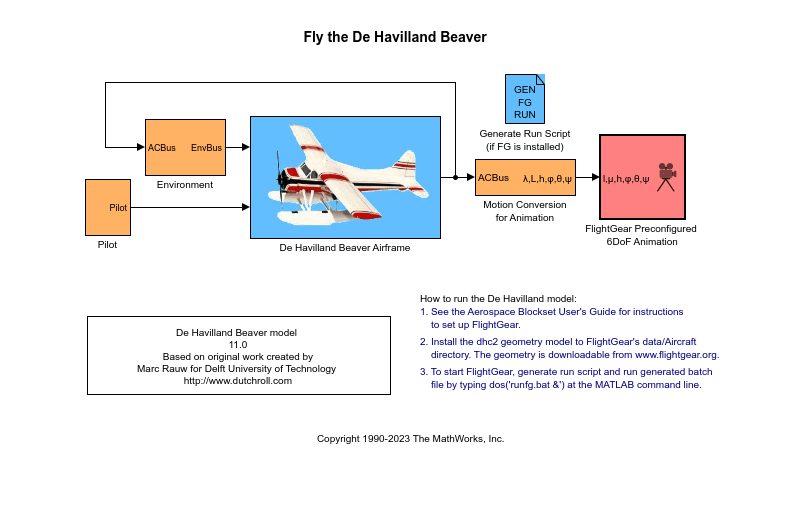Incidence, Sideslip, & Airspeed
Calculate incidence, sideslip, and airspeed
Libraries:
Aerospace Blockset /
Flight Parameters
Description
The Incidence, Sideslip, & Airspeed block calculates the angles between the velocity vector and the body, and also the total airspeed from the velocity components in the body-fixed coordinate frame. For the equations used in the calculation, see Algorithms.
Note
For fixed-wing aircraft, the angle, α, computed by the Incidence, Sideslip, & Airspeed block is the angle between the relative wind and the longitudinal axis of the airframe. This angle is denoted in many aerospace engineering references as angle of attack. Incidence, Sideslip, & Airspeed refers to this angle as the incidence angle.
In the case of vertical takeoff and landing (VTOL) configurations, the equations used for computation are the same as that for fixed-wing aircraft [1]. However, in maneuvers involving transitions between cruise and hover, there are likely scenarios involving low or zero values of velocity resulting in incorrect incidence and side-slip angles. Therefore, the use of this block for analysis of VTOL configurations is not recommended. As an alternative, use the 6DOF Wind (Quaternion) or 6DOF Wind (Wind Angles) blocks, which provide α and β as outputs.
Examples
Ports
Input
Output
Algorithms
To calculate the angles between the velocity vector and the body, and the total airspeed, the block uses these equations:
The block uses the tan-1 formulation for β to
prevent division by 0.
References
[1] C. Venkatesan, Fundamentals of Helicopter Dynamics: CRC Press, 261. Boca Raton, FL 2015.

